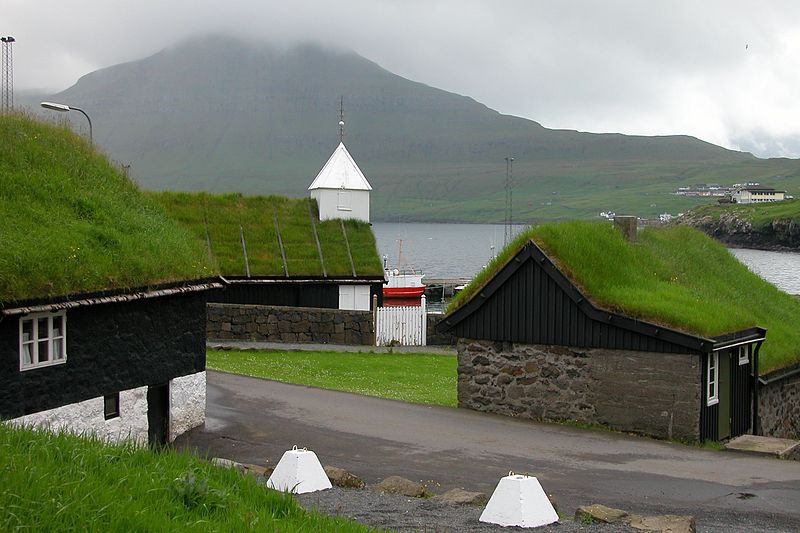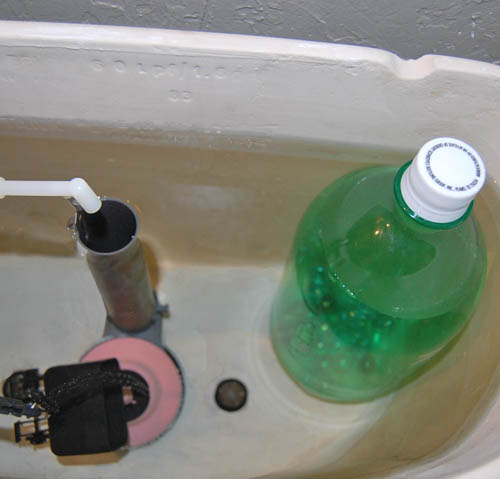For those who are contemplating moving their household, this
is an essay meant to help them reduce the strain on the planet associated with
their endeavor. Since my family is soon
to relocate due to my husband's new job, I am detailing our plans as a case
study.
Stage
One: Lightening the Load
The
first stage of the moving experience is to lighten one’s load. As we live in a place for any length of time,
objects start accumulating. The problem
here is that when it comes time to move, all of that stuff has to be boxed up,
moved and unpacked, which requires time, effort, money and carbon emissions
from burning fossil fuels. Fewer items
to haul could mean a smaller truck and all the corresponding monetary and
environmental savings associated with the smaller scale of operations.
This
stage of the process has great potential for fun. Many people, my husband and I included, tend
to hold on to more possessions than we really need. This leads to problems such as clutter,
disorganization and dust. It can be
quite a liberating feeling to just strip one’s possessions down to the
essentials. It's so much easier to
clean, maintain and live in a space with minimal “stuff.”
Here and
here are two great articles about the joy of
minimizing at
www.Zenhabits.net.
However,
since we are talking about moving in a green and sustainable fashion, it’s
important to think about where all of these things go. Some things will need to go in the trash or
the recycling, but the less this happens the better, since our waste services
are already burdened enough. There are
benefits to giving away or selling one’s household items. For one, acquiring products second hand
reduces many wastes, such as packaging, and extends the useful life of a
good. Reuse is an essential aspect of
sustainability. Another benefit is
economic, since the person receiving the goods gets them either for free or at
a deep discount, and many donations are tax deductible.
For my
family, lightening the load has been a process that has taken a long time and
is still not finished, though we have cleared much away. For us, the easiest, most no-nonsense way to
get rid of things is to put them out on the sidewalk. Anything we put out there is usually gone
within minutes, since we live near a recycling center and a few flea
markets. We also sell some things on
Craigslist, clearing away large pieces of furniture just by stipulating in the
ad that the buyer must pick up these items.
We donate to a place called
Urban Ore, a salvage and sales operation
in Berkeley. We also make use of the
local Goodwill for donating clothes. I
have heard good things about
Freecycle,
an online organizational tool
for people to give and get items for free, but have not yet tried it.
Unfortunately, a yard sale would not work in our location, but, for many, that
would be the perfect solution. We are
planning a “give away” party, an opportunity to gift friends with some of the
more beloved items in our collection, and whatever doesn’t make it out the door
during the party will go to charity or out on the sidewalk. Our goal is to have one truck load to move
when the time comes.
Stage
Two: Planning a Pedestrian Life
If we
want to fit all of the burgeoning population on this planet for future
generations without invoking cataclysmic climate crisis, we need as many people
as possible to lead a pedestrian lifestyle.
The burning of fossil fuels such as it is cannot continue. Drastically reducing the use of a car may not
be an option for everyone, but nevertheless, those who can, should. The Environmental Protection Agency says
here,
“Use public transportation, carpool or walk or bike whenever possible to avoid
using your car… [r]educe the stress of
commuting, reduce greenhouse gas emissions, and save… money.” The EPA says
here that one third of the greenhouse gas emissions in the USA come from
transportation.
A person living in a city without a car is very likely to have a much
smaller carbon footprint than those in the country, where driving a car is
usually a daily necessity. While
carpooling and using public transportation are both helpful behaviors compared
to solo driving, I would like to focus on walking.
Walking
has virtually no carbon footprint, and there are many other advantages to this
method of transportation. One of the
most obvious advantages is that walking is free. In my family, we currently spend about
$400 a month on gas, thanks to both of us commuting and lack of viable
alternatives for getting to work. That
adds up to a minimum of $4,800 a year, not including extra gas consumed for the
occasional car trip. Another clear
benefit of walking is exercise. Walking
to work would help many in the United States, where 74.6% of citizens are
overweight or obese and severe obesity has quadrupled in recent history,
according to Wikipedia.
Another
advantage of pedestrianism is more subtle, but perhaps the most important. Walking lends itself towards overall
happiness in innumerable small ways, opening up new opportunities to get to
know the people around us and the world in which we live.
Given
that my family is likely moving to the
Miracle Mile or
Koreatown district, some
of the densest areas of Los Angeles,
I figured that it would be
feasible to lead life on foot. Here I
will explain our planning process, which will be the key factor in making this
decision successful for us. To begin, we
can key into one location, my husband’s place of work, which is the reason for
our move. For him to walk to work, we’d
need to live no more than 2 miles walking distance from his employer. Truly, 2 miles is a stretch, but not a bad
distance by bicycle or a high energy day.
So, using Google maps, I’ve created a personal map called “ColcordPedestrian Life in LA.”
I drew a 2-mile radius circle around the employer to find the
inhabitable area and have begun saving the locations of basic services in or
near the circle. As we look for a place
to live, I’ll draw a similar circle around each prospective residence. By comparing the service-richness of one
circle versus another, it will give us a way to decide which home would offer a
better life for walking. The closer we
can get to the employer, shown as a green marker in Figure 1, the easier every
day will be for my family.
 |
| Figure 1: Colcord Pedestrian Life in LA - Map as of October 19, 2011, Courtesy of Google Maps |
Services
which will have the highest priority for us are the ones we’d use nearly every
day, like a grocery and a playground.
Next on the list are ones we’d visit weekly or so, like a library, a
farmers’ market, and a café. Finally,
we’d like to live near a pharmacy, a bank, a few restaurants, a beauty salon, a
museum, a second hand clothes store and a post office, but these would be
acceptable via public transportation, as well.
Another
household would probably have another set of priorities, like they might feel
more strongly about having a church nearby, so they’d have to refine their
search accordingly. Also, not everyone
can situate themselves so closely to their work, so instead they'd locate their
household within easy walking distance to viable public transportation
options. As long as basic services are
nearby on foot to the home or work place, alternative transportation can bridge
the gap, creating a kind of hybrid pedestrian lifestyle. Those with physical movement challenges could
enjoy a pedestrian lifestyle by making appropriate adjustments, perhaps simply
replacing the word “walking” with “wheeling” or reducing the 2-mile circle to,
say, a quarter mile circle.
Stage
Three: Cooperating with Climate
A
critical step for locating a sustainable home with a minimal carbon footprint
is to analyze available choices of residence in terms of climate
appropriateness, looking at the already-built environment for places which lend
themselves to passive heating and cooling, which go a long way towards reducing
energy use. To reduce sprawl, it is
essential that we avoid new development whenever feasible. There is a software program called
Climate Consultant which gives detailed
information regarding the climate in a given area, including just about
anything one would want to know regarding sun, wind, temperature and humidity
patterns throughout the year, and it also provides building design suggestions
for passive heating and cooling for that given place. This is a useful tool for anyone looking to
move, learning how to recognize a low-energy home.
Since
Climate Consultant gives its suggestions in the form of numbered guidelines
placed in order of importance, I will review here some of the recommendations
the program gave me for the climate in which we will be moving (California
Climate Zone 9). The most important
knowledge the software wants us to have is that “heat gain from equipment,
lights, and occupants will greatly reduce heating needs so keep home tight,
well insulated (use ventilation in summer).”
See Figure 2 below. Next, it
says, “A whole-house fan or natural ventilation can store nighttime ‘coolth’ in
high mass interior surfaces, thus reducing or eliminating air conditioning.”
See Figure 3 below. It also says,
“Window overhangs (designed for this latitude) or operable sunshades (extend in
summer, retract in winter) can reduce or eliminate air conditioning.” See
Figure 4 below. Next in importance is to
orient the building towards the south “to maximize winter sun exposure, but
design overhangs to fully shade in summer.” See Figure 5 below. Figure 6 below shows what a traditional home
in this climate might look like, with “high mass construction with small well
shaded openings operable for night ventilation to cool the mass.” Much further down the list, Climate
Consultant mentioned that “Traditional homes in hot windy dry climates used
enclosed well shaded courtyards, with a small fountain to provide
wind-protected microclimates,” which is shown below in Figure 7. (See end of article for more information on Climate Consultant)
Even though this is one of the last bits of information to consider, I
included it here because I’ve always wanted to live in a place with an interior
courtyard and either a fountain or a pool (or both).
 |
| Figure 2 (Above) Climate Consultant Design Guideline 11 |
 |
| Figure 3 (Above) Climate Consultant Design Guideline 39 |
 |
| Figure 4 (Above) Climate Consultant Design Guideline 37 |
 |
| Figure 5 (Above) Climate Consultant Design Guideline 19 |
 |
| Figure 6 (Above) Climate Consultant Design Guideline 61 |
 |
| Figure 7 (Above) Climate consultant Design Guideline 66 |
In Figure 8, shown below, you can see an aerial view of my
husband's work, which is the sawtooth building on the right, and a very nice
apartment complex directly behind it.
The building offers many of the suggestions that Climate Consultant
specifies, like highly reflective surfaces, an interior courtyard with a pool,
high mass walls, and many of the windows have a bit of shading, though I can't
tell if it's enough. I'm fairly certain
this building is out of our price range, unfortunately, but it's a great
example of a place that would be a pedestrian solution. They also have tuck-under parking, which is a
helpful way to avoid a heat island effect.
Once we find our new place, and as we get used to living
there, we plan to experiment with various ways to use resources wisely. This is another part of cooperating with
climate, to not burden the grid more than needed. I suppose this part of operations would vary
quite a bit from location to location, and would require more personalized
research for any given household. For
us, since we know we're likely to have lots of sunshine and dry weather, we
want to try: line-drying clothes, using a solar oven, brewing sun tea and using
a solar dehydrator if there are nearby fruit trees. When we buy a home someday, we can look into
solar panels and solar hot water heating.
We also intend to re-use our shower water, collected in buckets, for
watering plants out on our balcony, and figuring out other ways to conserve
water, learning as we go. To cut down on
carbon-spewing plane trips, we plan on buying the highest speed internet we can
and making a lifestyle out of video chatting with friends and family, who are
spread out all over the country.
 |
| Figure 8: My husband's workplace is the sawtooth building on the right, and I really like this multi-use building behind it. Image courtesy of Google Maps. |
Stage
Four: Community Connection
Last but
not least, there is no such thing as a “sustainable” life move without a plan
to make new friends. There is nothing
like the company of other human beings to make life truly enjoyable, which is
the cornerstone of desirable sustainability, at least in my book. I've ordered personal cards made out of 100%
recycled paper with my name and contact information, and I plan to carry these
with me to the playground, the grocery store, and for walks around the block,
keeping an eye out and a heart open for likely new neighbors. For many, making a plan to join a church,
synagogue or other religious community would be the key foundational step to
integrating into the local culture.
Another good way to meet people is to go to classes or clubs in the
area, where new friends with similar interests are likely to be. For me, I am angling for other mothers with
young children, since I've found this is usually the best recipe for a viable
relationship at this stage in my life.
Not only can our kids play together, but we can also break each other,
allowing for a more flexible life for all.
Having friends who are also neighbors is a real joy, and often practical,
when it comes time to help each other out.
These
four stages of moving are surely not exhaustive, but they are a good place to
start when planning a move that is both light on the planet and buoyant to the
soul. I wish anyone who reads this and
uses this information the best of luck in their endeavors.
Climate
Consultant 5.1 (Build 2, Jun 8, 2011) Design Guidelines for Climate Zone 9, CA,
USA. Developed by the UCLA Energy Design
Tools Group, Copyright 2011 by the Regents of the University of
California.





















